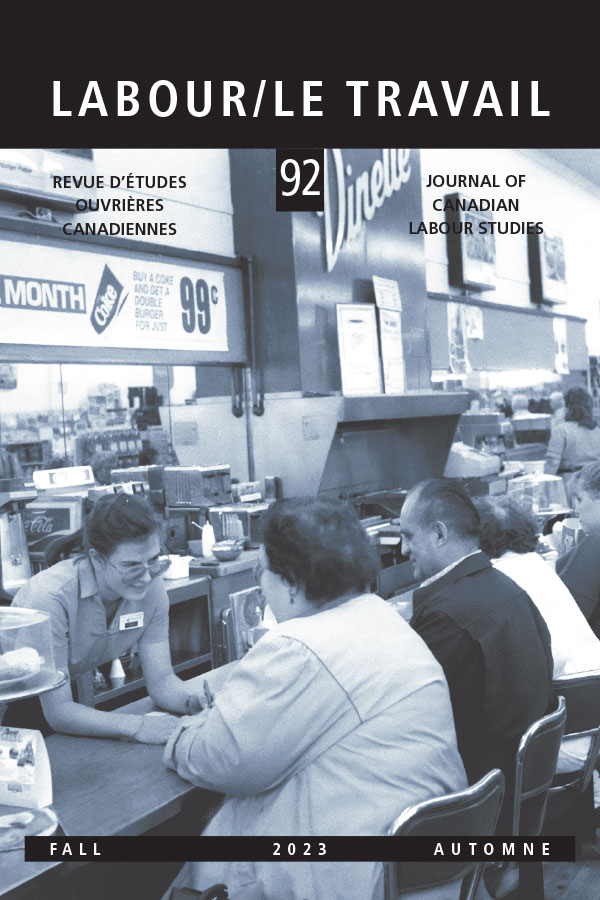Published 2023-11-10
Keywords
- Indigenous labour relations,
- settler colonialism,
- “core of Indianness”,
- public-sector unionism,
- jurisdiction
How to Cite
Abstract
This article examines the history of, and legal precedent set by, Four B Manufacturing v. United Garment Workers of America, a 1980 Supreme Court of Canada case involving an Indigenous-owned manufacturing firm that resisted the efforts of its Indigenous and non-Indigenous workers to form a union on the Tyendinaga Mohawk Territory, a reserve in southeastern Ontario. The employer, Four B, contested the jurisdiction of the Ontario Labour Relations Board and argued, unsuccessfully, that as an “Indian enterprise,” its own operations were a matter of federal jurisdiction. We return to the case of Four B for three interrelated reasons. First, we argue that Four B remains relevant because of the ways that the political economy of settler-colonial Canada continues to structure Indigenous enterprises, labour, and employment as ongoing sites of tension. Second, as the inaugural case dealing with the “core of Indianness” – a contested legal concept used by the courts to determine federal jurisdiction over Indigenous labour – this case both set the legal precedent and shaped the subsequent political terrain of Indigenous labour relations. Third, the issues addressed in Four B contextualize recent jurisdictional struggles over Indigenous enterprises, labour, and employment in what we term the “Indigenous public sector” – namely, health care, social services, and First Nations government administration. The article reviews the case history of Four B, setting this against the backdrop of deindustrialization in southeastern Ontario during the period, before tracing how the case influenced the juridical and political landscape of Indigenous labour relations. We close by considering the potential tensions between Indigenous self-determination and the exercise of collective bargaining rights by Indigenous workers.
